
Easy isn’t always healthy
You’ve had a long day with work and you don’t have time to make dinner. Or maybe you’re at the grocery store anyway and those prepared meals look so tempting. Hold on before you start filling your cart. Nutritionists say that some of those ready-to-go meals might be tasty, but they aren’t as healthy as you’d think. Plus, many of them have potential safety concerns.
There really are plenty of healthy meals you can make in just about 20 minutes. But if you’re committed to prepared foods, nutritionists say here are the ones they avoid when they go shopping—and some tastier, healthier, and safer options instead.
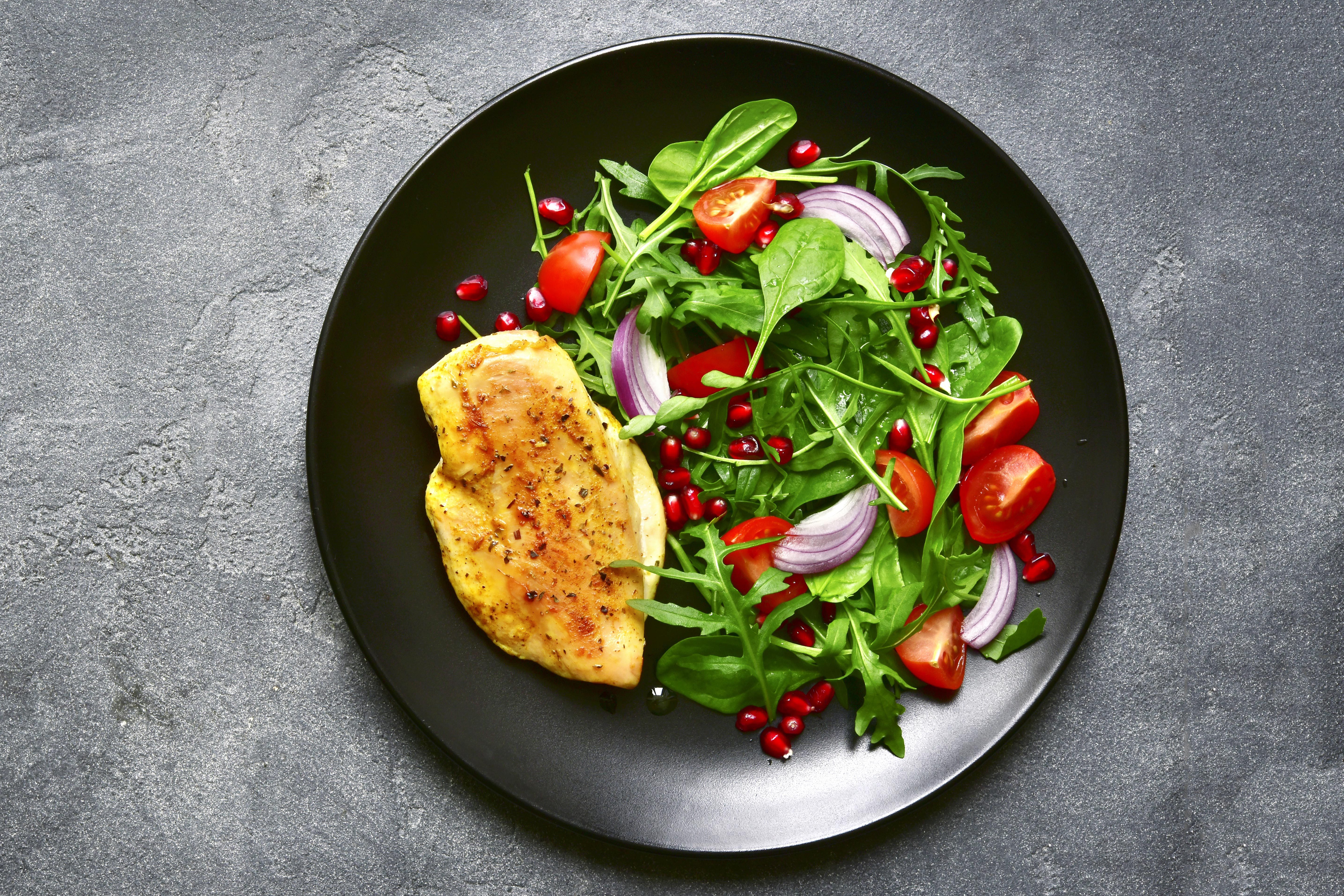
Tuna or chicken salad
Tuna or chicken on their own can be a tasty, healthy, and filling meal. The problem starts when you make them into a “salad”—while the word connotes freshness and nutrition, tuna and chicken salad have very little of either one, says Sam Presicci, lead registered dietitian at Snap Kitchen. These salads are packed with mayo and other oils that can easily go rancid in addition to being packed with calories. Instead, go for plain or lightly seasoned tuna or chicken on top of salad greens. (Easy swaps are just one of the 37 secrets nutritionists won’t tell you for free.)
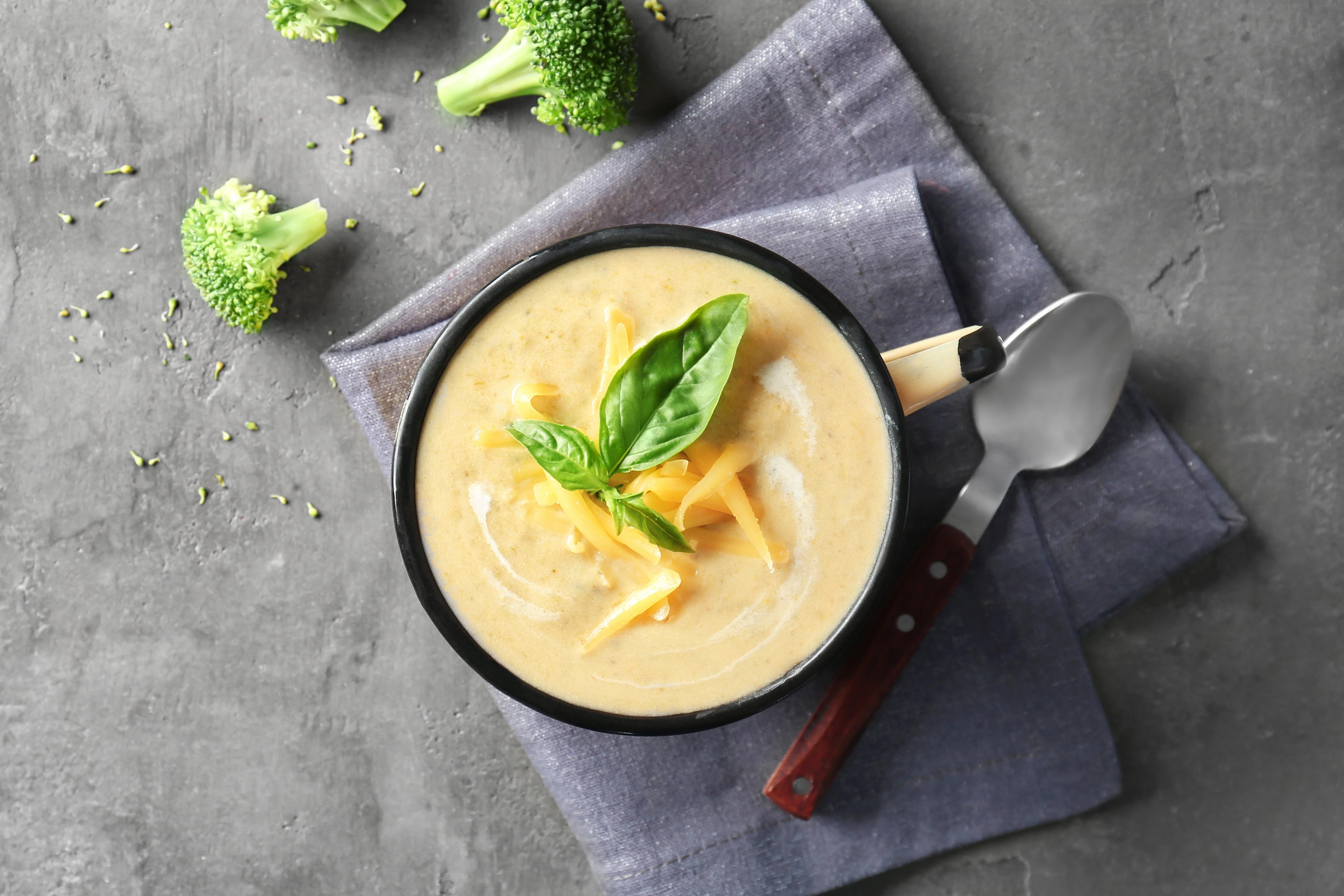
Broccoli cheddar soup
“While soups are often perceived as a healthy choice, many prepared soups come with a long list of ingredients, plus super high sodium levels,” Presicci says. On top of that, they must be kept within a very specific temperature range to avoid bacterial contamination and spoilage—something that can be tricky to check.
If soup is what you’re craving, choose broth-based, vegetable-laden varieties instead of creamy flavors. In addition, make sure the deli’s or store’s soup is kept in a hygienic, heated, and moderated table. For an even healthier option, Presicci recommends buying a bottle of bone broth from the refrigerator section and asking to heat it in the deli. (When you have time, make one of these simple homemade soup recipes, and freeze them for later.)
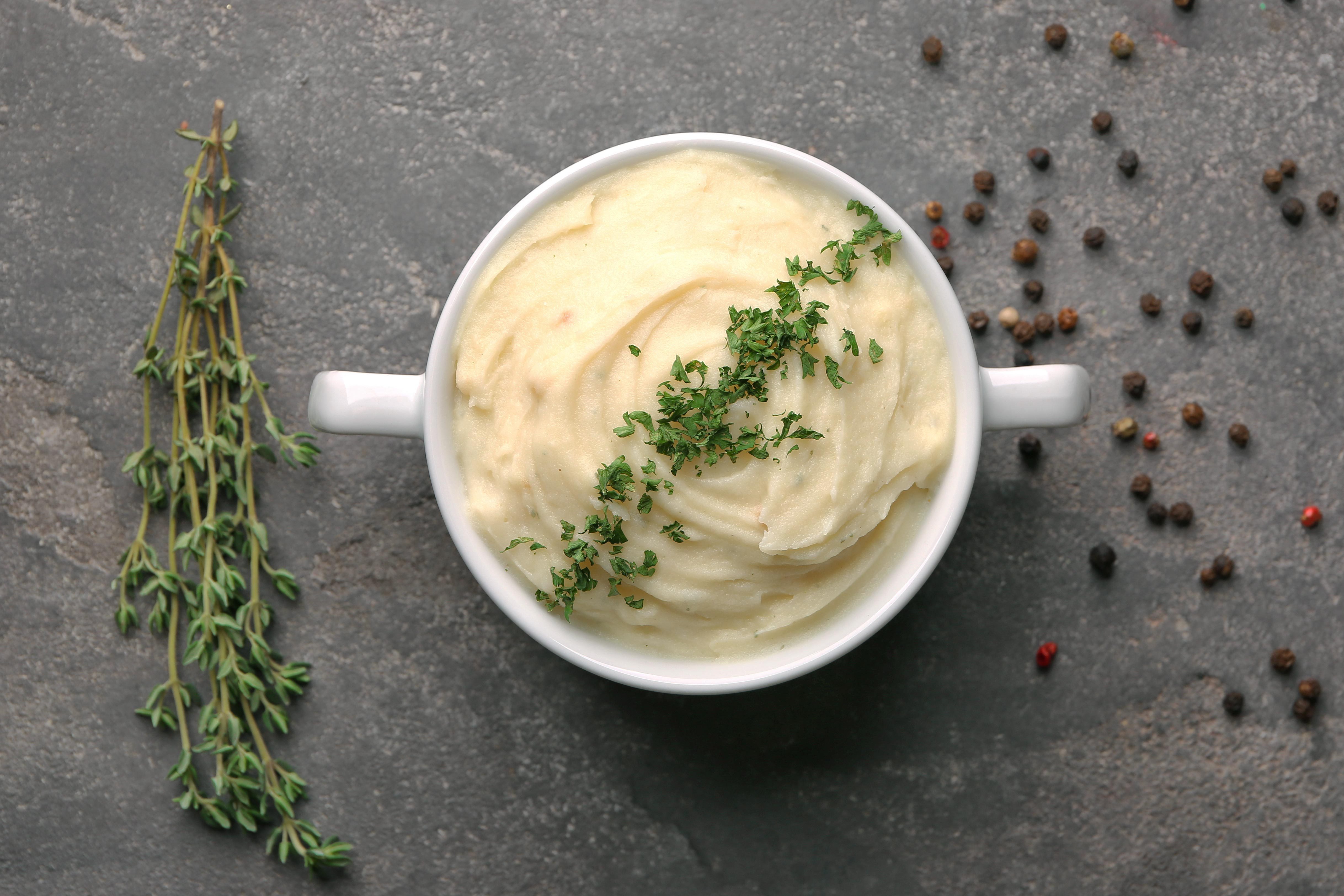
Mashed potatoes
“Personally, I’m just really picky about my mashed potatoes—I like to make sure they are the real potatoes, with the skins on and great spices and seasonings,” says Kerry Clifford, registered dietitian at Fresh Thyme Farmers Market. It’s the rare grocery store deli that makes their mashed potatoes from scratch. “I personally will not tolerate boxed potatoes!” she adds. A baked potato is a healthier option or, if like Clifford, you could simply choose a different side—she recommends a bag of fresh cherries, some people suggest mashed cauliflower—and save the potatoes for when you can make the good stuff. Here’s a healthy mashed potato recipe you can try.
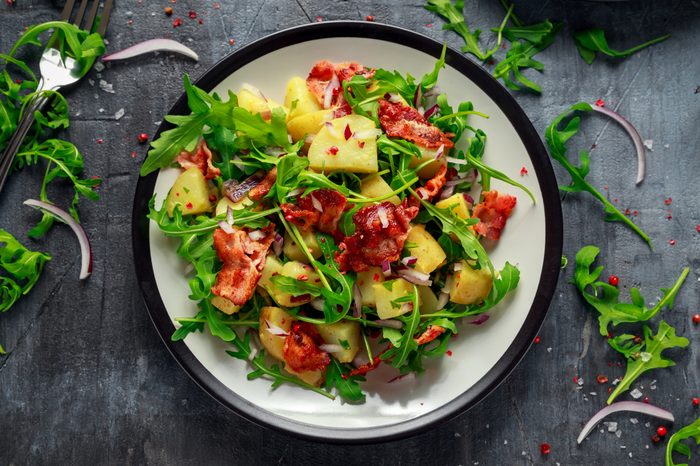
Bacon ranch salad
You may think you can’t go wrong with the fresh salad bar at the grocery store but there are plenty of potential landmines, Presicci says. One big problem is the bottomless vats of salad dressing, which can take a health-conscious meal straight to junk food with a single ladle. “These dressings almost always use a very processed seed oil like canola oil or soybean oil which are high in pro-inflammatory omega-6 fats and easily become rancid,” she explains. They also contain a ton of calories and it’s difficult to stick to one serving when serving yourself with an unmarked ladle. Not surprisingly, salad dressings are also one of the 14 foods nutritionists also skip at buffets. Instead, opt for vinegar-based over creamy dressings and use portion control by grabbing a to-go packet or cup. Or, better still, make your own dressing out of a healthy oil, like avocado, vinegar, and some seasoning, she says. Give these dietitian-approved healthy salad dressing recipes a go.

Rotisserie chickens
Rotisserie chickens are tasty and the ultimate in convenience because they can be eaten as is or used in a wide variety of recipes. But you make some big sacrifices for this convenience. “You’d be shocked by how many ingredients end up in a rotisserie chicken that don’t belong,” Presicci says. From salt injections to preservatives to artificial flavorings, these things can add unwanted calories, increase your risk of diseases like cancer, and exacerbate some health conditions. Some grocery stores offer more natural versions—look for chickens that are just seasonings (like salt and pepper) without any other additives like water, gluten, or refined sugar—otherwise, skip this one, she says.

Smoothie or protein shake
A smoothie or protein shake can be an easy way to get a healthy, portable meal. Well, at least they are when you make them at home. Many grocery stores now have juice/smoothie bars and, while they can have a great selection, there’s a reason they often taste better than your homemade smoothie, says Andrew Woodward, a Loma Linda University Health Oncology dietitian. Smoothie places often add things like fruit juice, sweetened yogurt, or even ice cream that pack on calories and make your “health drink” have more sugar and calories than a slice of cake, he explains.
If you really want a smoothie, don’t pick a pre-made “recipe” but instead specify which ingredients you want, sticking mainly to fruit and veggies, he says.
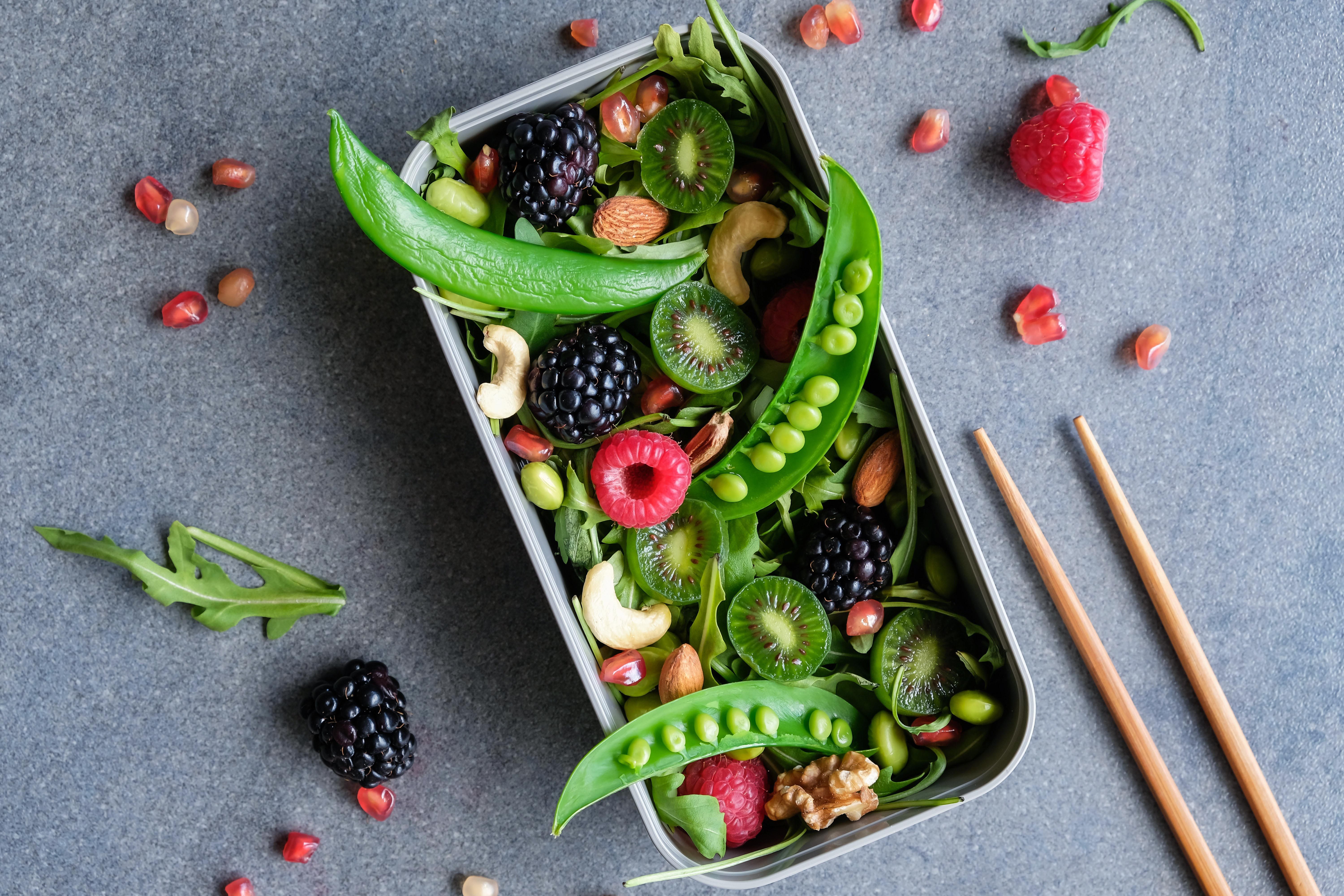
Pre-made salads
Grab-n-go salads are a staple of many grocery store deli sections but while they may seem like a solid choice, they tend to skimp on fresh veggies and go heavy on toppings like tortilla strips, sugared nuts, dried and sweetened fruit, processed meats, fatty cheeses, and too many dressings, Woodward says. The green leaves just become decoration at that point, he points out. Skip the pre-fab stuff and take the extra two minutes to build your own from the salad bar where you have a lot more control over which ingredients you use and your portion sizes, he says.
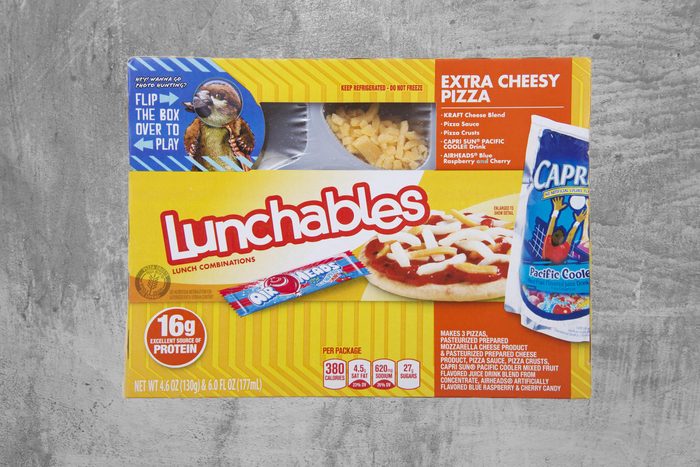
Packaged meal kits
Kids need grab-n-go meals too which is why you’ll often find prepackaged meal “kits” in the deli section. The healthier of these products generally consist of crackers, meat, and cheese combined with a juice box and a piece of candy. It goes downhill from there with pizza or nacho options—all full of preservatives, artificial flavors, and colors, and more sugar than a child should eat in an entire day, says Julie Cunningham, a certified diabetes educator in Hendersonville, North Carolina. “These have no vegetables, no fiber, and definitely aren’t a good way to teach kids what a healthy lunch should be,” she adds.
Instead, choose a hard-boiled egg and a tangerine for a quick meal that will be more filling than a prepackaged lunch. Or if they love the kit option, look for child-friendly versions made with non-processed meats, whole grain crackers, bottled water, and dried fruit.
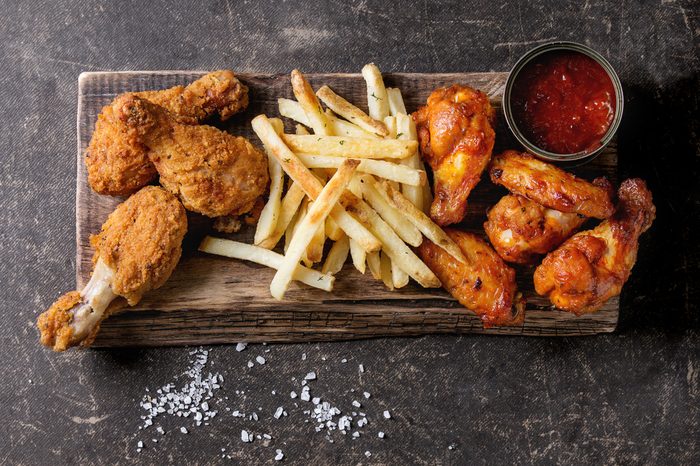
Fried chicken
Nobody thinks fried chicken is the healthiest choice for a quick dinner but how bad can it really be? Pretty darn bad, says registered dietitian Melissa Mitri. Fried chicken is loaded with calories, salt, and saturated fats, not to mention the often-rancid oils it is fried in, she explains. Don’t be tricked by its seductive aroma; this meal will leave you bloated, tired, and not feeling so hot.
Opt for less-processed protein sources instead, like lightly seasoned chicken from the salad bar. If you must have a taste of the crispy chicken, ask for a few small strips you can cut up over a large green salad.
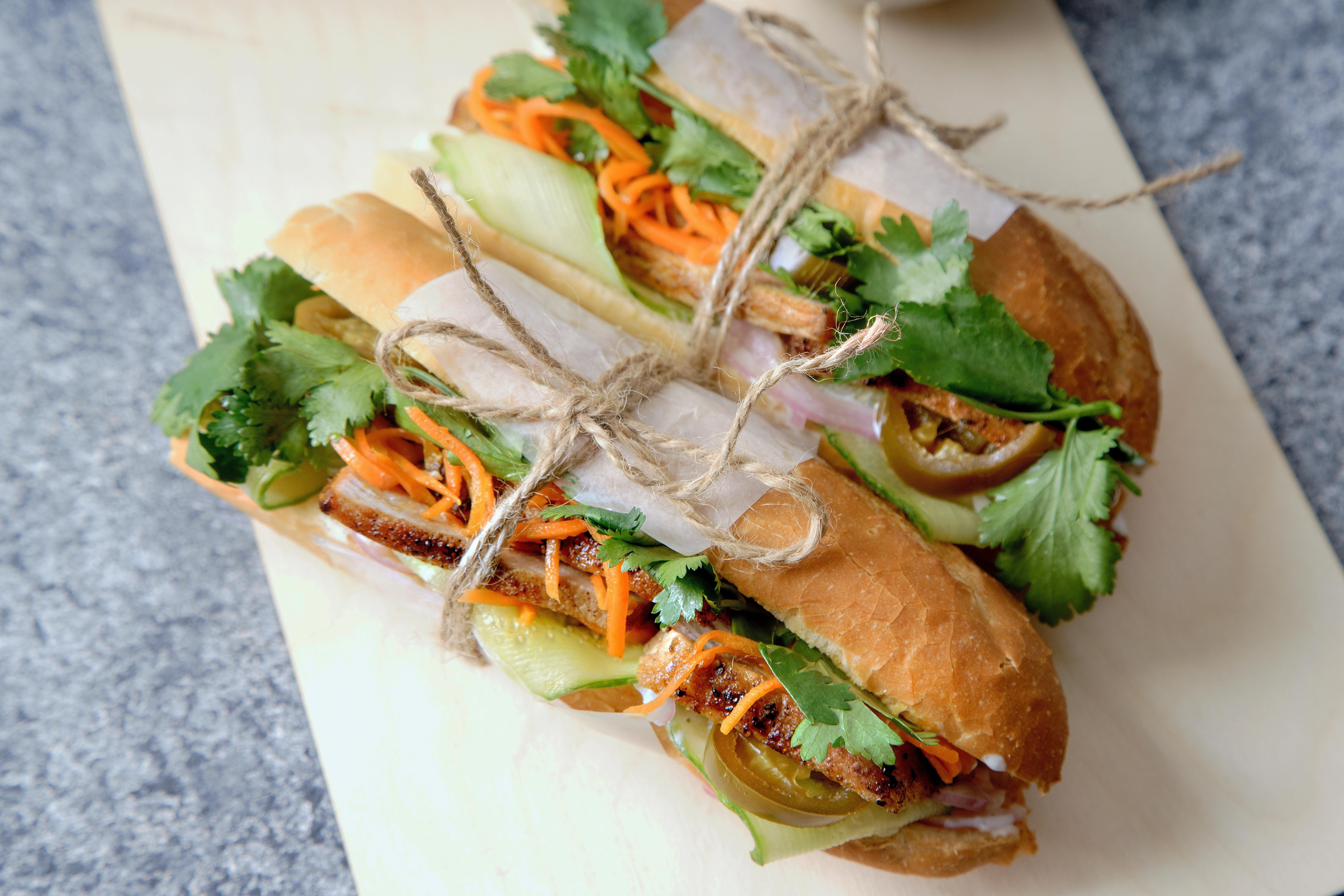
Sub sandwiches
Who doesn’t love a good, hearty sandwich? Many pre-made subs are full of processed meats and cheeses, oily toppings, and sugary bread. It is possible to choose a healthier option with plenty of veggies on whole grain bread. However, there is a simpler reason Mitri steers clear of sandwiches: “They get soggy really fast!” she says. “Plus, they’re just so easy to make at home, it doesn’t feel like it’s saving me any time to buy them at the deli.”
Instead of grabbing a pre-made sub, ask for your sandwich to be made to order—that way you can control the ingredients and avoid the soggy bread problem.
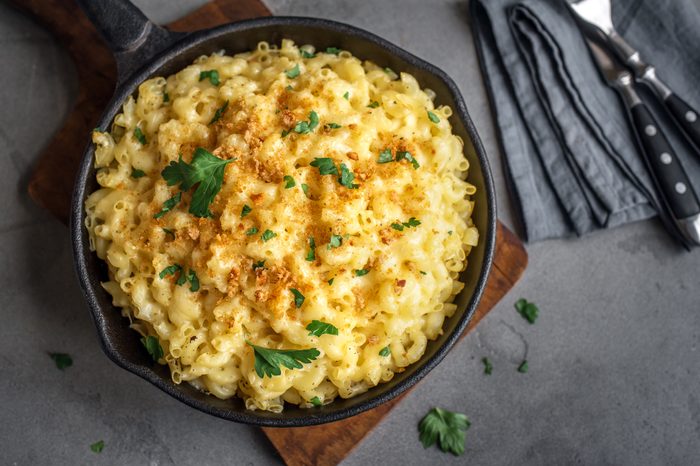
Mac-n-cheese
Macaroni and cheese is the ultimate comfort food. Unfortunately, this isn’t a dish that holds up well nutritionally or on the hot table, Mitri says. “At its core, mac-n-cheese, is just simple carbs and fat—it’s not a well-balanced meal and you’ll be hungry again 30 minutes later,” she explains.
If you need to indulge your mac-n-cheese craving, try mixing in some peas or butternut squash from the salad bar to give it a little nutritional boost, she says. When you make your own, don’t sweat if it’s organic or not—nutritionists don’t.
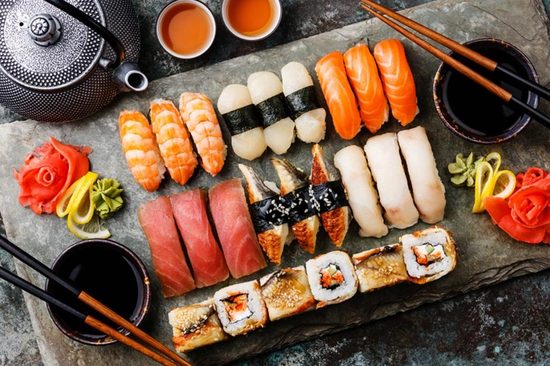
Sushi
“Japanese restaurants have very high standards when it comes to sushi-grade fish but I have a difficult time trusting the freshness of prepared sushi in grocery stores, particularly in landlocked states,” says Ashlee Van Buskirk, nutritionist and founder of Whole Intent. “Who knows how long ago that salmon was caught?” Food poisoning isn’t worth the risk for convenience, she says.
To stay on the safe side, choose cooked sushi rolls over raw or sashimi types, she says. Or go for a summer roll with veggies rolled up in rice paper.
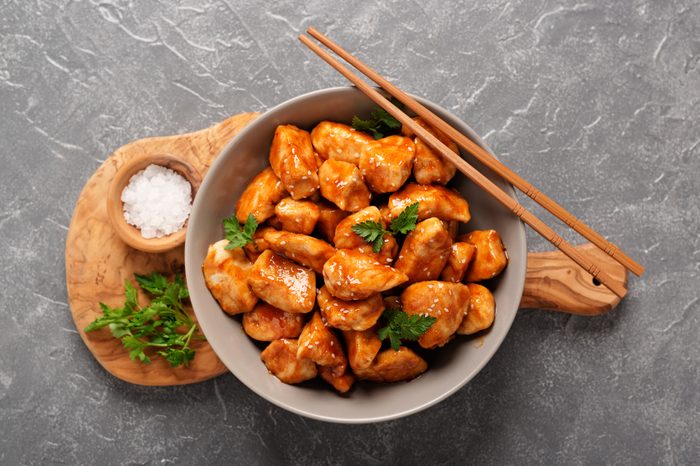
Orange chicken
Many “Chinese” dishes that are popular in America, like orange chicken, are problematic because they a) don’t really reflect Chinese cuisine at all and b) are loaded with sugar and salt, Van Buskirk says. Often they consist of very small amounts of meat that are then breaded, fried, and drenched in a sugar sauce.
“These prepared dishes won’t help you meet your nutritional targets,” she explains. “Plus, the store-bought orange chicken doesn’t compare to that of a real Asian culinary restaurant.” Instead, order grilled or sauteed chicken with the sauce on the side and a large side order of steamed vegetables or one of these other healthy Chinese food options.
